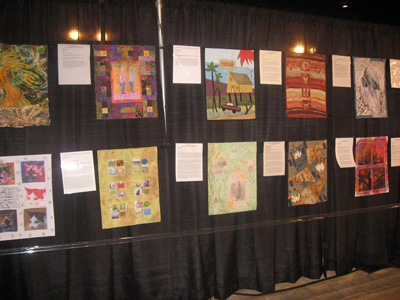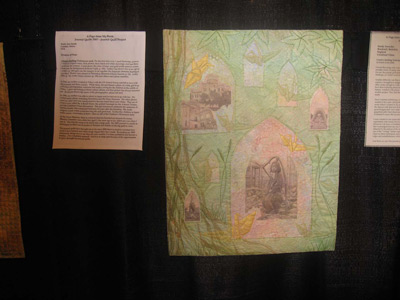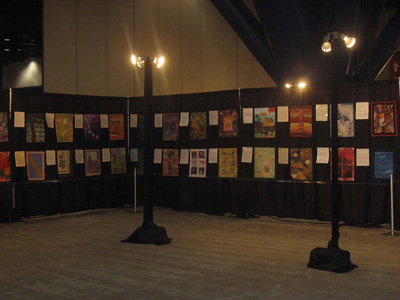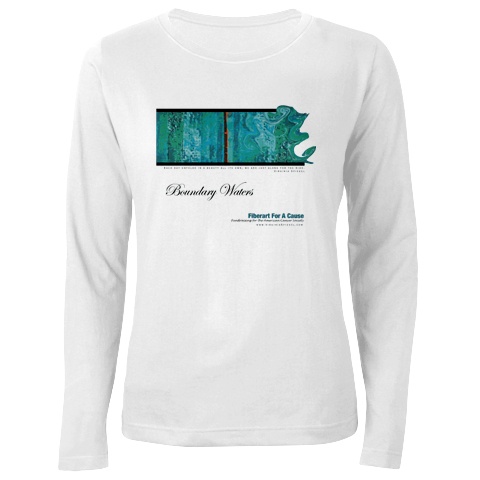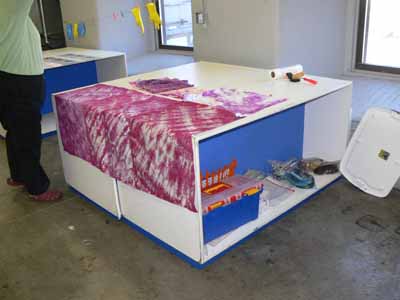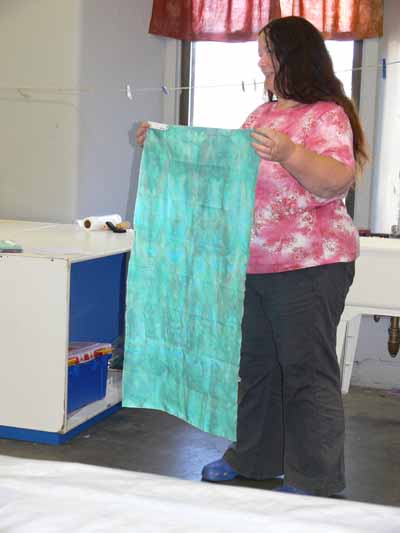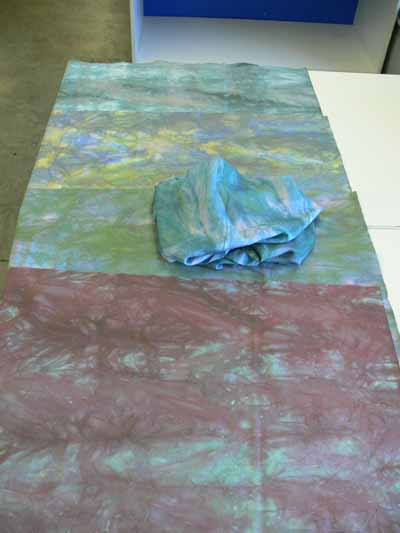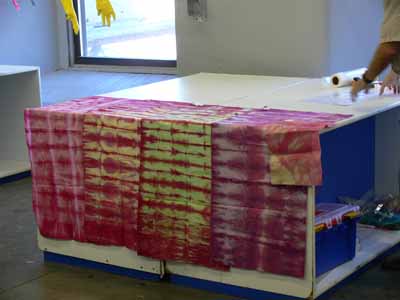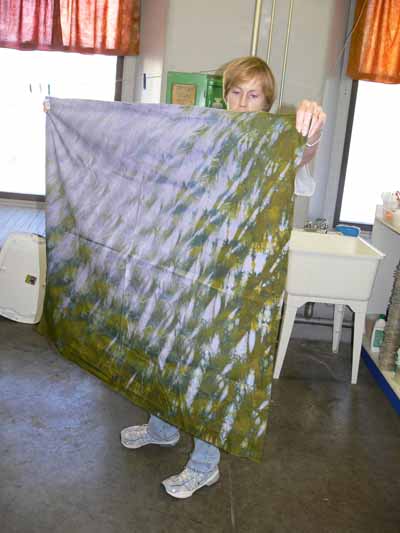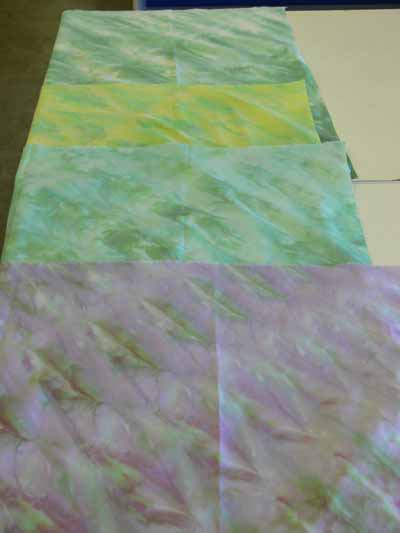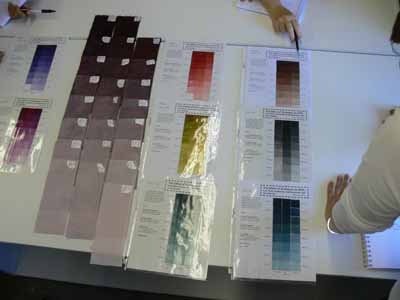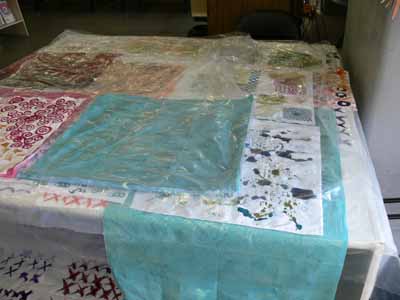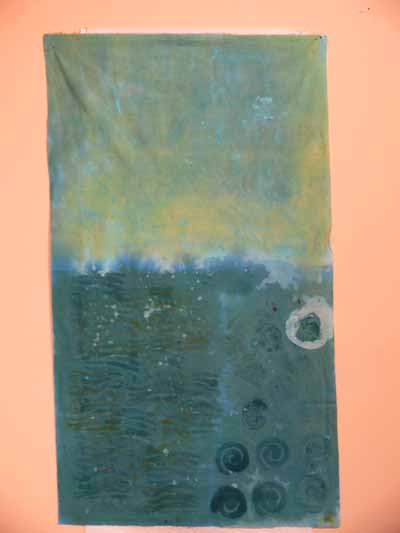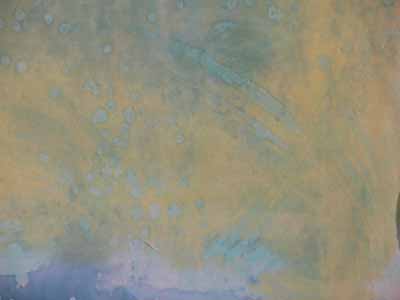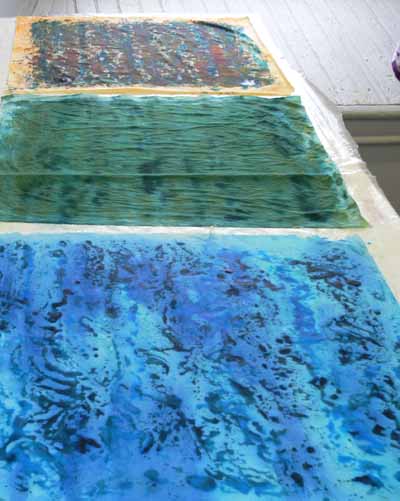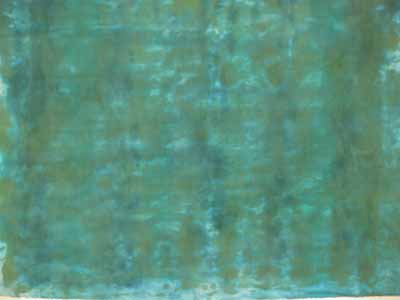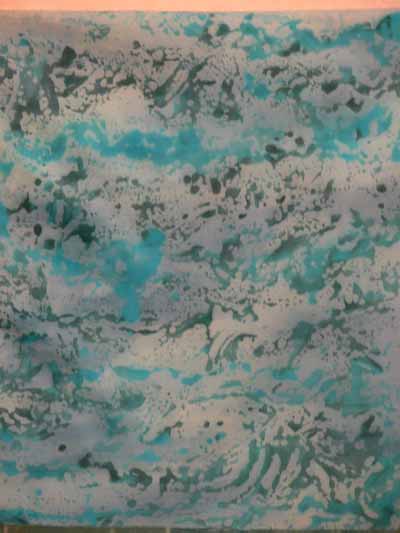Windows of Hope in Houston
Thursday, November 15th, 2007Oh boy! Deborah (whom many of you know from her blog) took some wonderful “Neighborhood” shots for me of my 2007 Journal art quilt hanging at Quilt Festival in Houston this year. Mine is in the center, bottom row, in soft green. The pipe and drape walls are a standard height..about 8 feet. The white pages you see to the left of each journal are our written journals to accompany the quilt.
For those who don’t know, Journal quilts are wonderful little art quilts. In past years we have done a single small journal, the size of a piece of copy paper, each month for January through September. This year, the final year of the Journal Quilt Project (organized by Karey Bresenhan and the good folks of Quilts Inc., who put on the “Mecca” shows in Houston, Chicago and now Long Beach), we were to make a single larger quilt 17×22 (same as four sheets together). For more info about my 2007 journal quilt and the book about the journal quilt project, check this link and this one for the book review. For a link to many on-line images of the 2007 journal quilts, click here or here.
Here’s a close-in shot of my journal. If you look closely, VERY closely, you can barely see the black hanging sleeves. IQA (International Quilt Association… www.quilts.org) does a brilliant job at hanging, because you never really see / notice the hanging apparatus. Instead, the emphasis is on the quilts. By using black drapes, black rods, blackened chains, and covering the ends of the large rods (on the larger quilts…not in this photo) with cloth sleeves made from the same fabric as the curtains, the hanging apparatus just disappears allowing viewers to focus on the quilts.
And here is a “wide angle” view of the neighborhood. When I first went to quilt shows and took photos for people of their quilts hanging, I did what everyone else does: take a picture of the quilt. Then when I got into shows too far away to visit, I realized what I really wanted was not a picture of my quilt (after all, I know what it looks like!) but a picture of what it looks like in the venue. These pictures from Deborah are exactly that! You can also see that IQA covers the light poles and cinder blocks with black, too, helping light the quilts (the ceiling and lights of the convention center are about a mile above the quilts) without being obtrusive.
I can see my quilt, see my neighbors, and get a nice feel for the show and exhibit area. Thank you Deborah!

